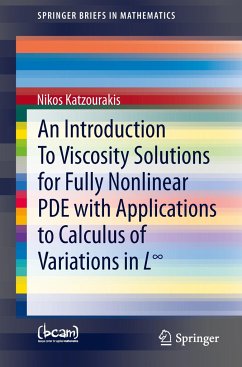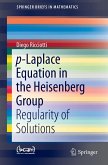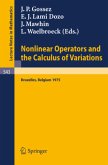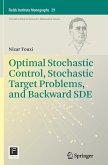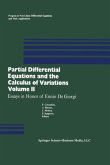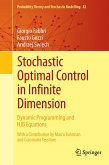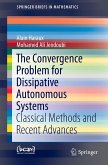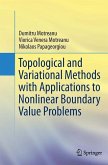The purpose of this book is to give a quick and elementary, yet rigorous, presentation of the rudiments of the so-called theory of Viscosity Solutions which applies to fully nonlinear 1st and 2nd order Partial Differential Equations (PDE). For such equations, particularly for 2nd order ones, solutions generally are non-smooth and standard approaches in order to define a "weak solution" do not apply: classical, strong almost everywhere, weak, measure-valued and distributional solutions either do not exist or may not even be defined. The main reason for the latter failure is that, the standard idea of using "integration-by-parts" in order to pass derivatives to smooth test functions by duality, is not available for non-divergence structure PDE.
"In this small book, the author, after introducing basic and non-basic concepts of the theory of viscosity solutions for first and second order PDEs, applies the theory to two specific problems such as existence of viscosity solution for the Euler-Lagrange PDE and for the -Laplacian. ... The book can be certainly used as text for an advanced course and also as manual for researchers." (Fabio Bagagiolo, zbMATH, Vol. 1326.35006, 2016)
"The book under review is a nice introduction to the theory of viscosity solutions for fully nonlinear PDEs ... . The book, which is addressed to a public having basic knowledge in PDEs, is based on a course given by the author ... . The explanations are very clear, and the reader is introduced to the theory step by step, the author taking the time to explain several technical details, but without making the exposition too heavy."(Enea Parini, Mathematical Reviews, November, 2015)
"The book under review is a nice introduction to the theory of viscosity solutions for fully nonlinear PDEs ... . The book, which is addressed to a public having basic knowledge in PDEs, is based on a course given by the author ... . The explanations are very clear, and the reader is introduced to the theory step by step, the author taking the time to explain several technical details, but without making the exposition too heavy."(Enea Parini, Mathematical Reviews, November, 2015)

